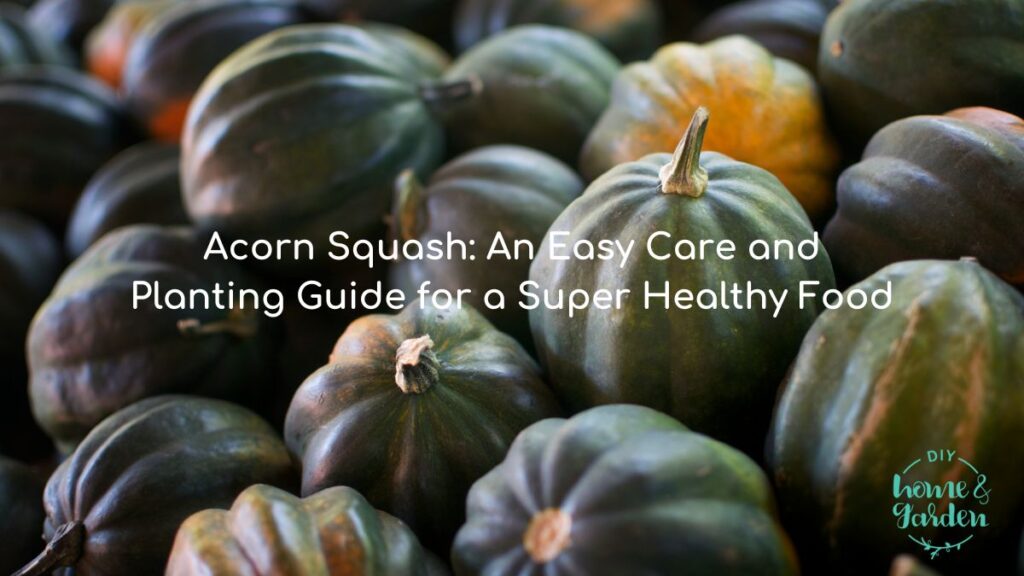How to Cut an Acorn Squash, the full-text transcript is below:
Hi DIYers, and welcome to DIY Home & Garden. Today I’m going to show you how to take an acorn squash and cut it down. These are notoriously tough little squashes, so you need to have an extremely sharp knife. So this one is well-sharpened and is my go-to in my kitchen.
So, this is your acorn squash. You can see it has these little ribbed grooves in it and it very much resembles an acorn–hence the name. So I’m going to show you how to do this.
You’re going to start with the top, making your first slice about a half inch in from the stem. You might have to muscle through there a little bit, so you’ll get some arm workout. Take that (the stem) and discard that in the compost.
Next up, I’m going to take the bottom part off. You go down here and go about a half inch in. I’m right-handed, but I’m going to try to show y’all, so I’m at an awkward angle. You’ll hold it more naturally than this–I’d just like you to see what I’m doing.
Okay, there we have it.
The next step is to cut it in half. You want to go lengthwise along the same as the ribs. The other thing you can do at this point is to make rings and then cube it. But I want to do a half because I want to drizzle it with oil, so I’m going to drizzle, and I’m going to stuff it. So I want to show you how to prepare for that.
So now you can see you have these seeds. I like to take a spoon and just scoop those out. If you have a serrated spoon–a melon removal spoon–for scooping into melon, that is a perfect tool for this. You can see I’m going to get in here and get all that out.
If you have an heirloom, non-GMO acorn squash, you can also save these seeds, dry them, and plant them next year.–if you need the seeds or like to save seeds. If you’re working with a hybrid or GMO, you aren’t guaranteed to get a good output next year, so I wouldn’t save them if that is the case. It just depends on what you’re working with.
Okay. I’m sorry. I know you can’t see this because I’m working right-handed. Here we are! We got all that out. You can see there’s kind of little stringiness to it, you want to try to cut that. That’s good fiber for ya. But it’s not always real pleasant to the teeth. Especially around the seeds, they seem to be stronger. So I’m just gonna get in here. Make sure I have all that scraped out.
Now what I’m gonna do is drizzle each half with some basting oil. It’s a sunflower oil and garlic and herb blend. And then I’m going to stuff it with some rice and some ground chicken for a nice, light, little lunch today.
There’s that. I’m gonna do the same thing on the other side, I’ll hold this more this way for you to see. So you see just how easy that is. It (acorn squash) has a very, very tough outer skin, it takes a little bit of doing to get to it. But once you do, you can see it isn’t that difficult to process this and get it ready to cook.
And you can do what I did, and cut it in halves for stuffing. Actually, the other thing, too, I like to do if I’m stuffing is take a little right there [cuts a bit off the bottom to make it flat and level] and it makes a nice little serving bowl. Isn’t that cute?


